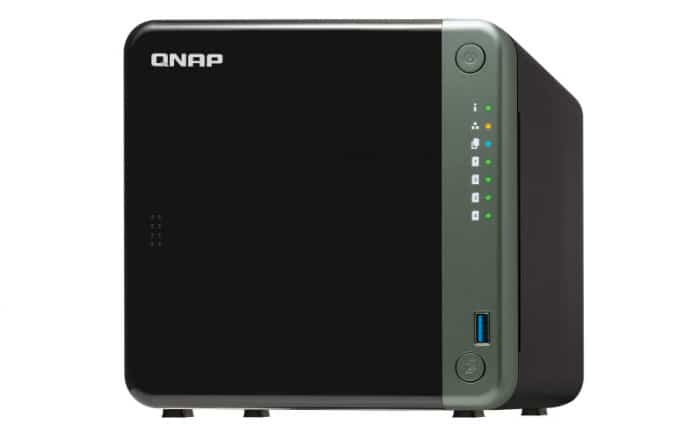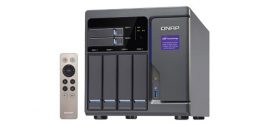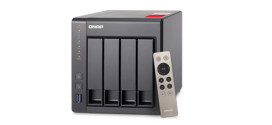Introduction
If you happen to have a NAS unit that is 3 years or older, it is about time to start looking for an upgrade. Not necessary because you need the additional performance from the newer processor upgrade (though it never hurts) but rather, newer NAS devices are equipped with faster 2.5 gigabit ethernet port (2.g GbE) as standard than the gigabit ethernet port found in older models. As network transfer speed is often the slowest component in any NAS, the upgrade would be the most significant performance boost that you would notice.
The Gigabit Ethernet has been the network interface in most home and small business environment for almost 20 years (gigabit ethernet first came into use in 1999). While there have been faster options such as 10GBase-T available, the existing Cat 5e and Cat 6 cables that are as ubiquitous as your electrical wire would only able to run at full speed over a short distance (the Cat 6 cables would achieve full speed up to 55 meters on a good quality installation). This is where the the 2.5GBase-T and the 5GBase-T come in as they act as a bridge-gap where they are capable of utilize existing cablings to delivering 2.5 times or 5 times, respectively, of the speed offered by the gigabit ethernet.
Even with a NAS that only has regular SATA III drives you quickly can saturate a 1 Gbps-connection, especially if you put in some SATA SSD-drives. It is not hard to see just how much extra performance boost that a faster network transfer speed can brings. Therefore, it is quite exciting to see the 2.5GBase-T and the 5GBase-T finally making into the consumer products. In fact, QNAP has a wide range affordable network products ranges from switches, network cards, and routers that provides a one-stop-shop for anyone who is looking to upgrade to a 2.5GbE. And the latest family of consumer and small business NAS, the TS-x35D family, is just the forward looking device that would not only satisfy your current storage need but also is ready for the future.
TS-x53D
In terms of the specification, we can consider the TS-x53D as the successor or the direct upgrade to the TS-x53Be. On the CPU front, the TS-x53D gets a minor processor upgrade to the Celeron J4125 (Gemini Lake refresh) from the Celeron J3455 (Apollo Lake) found in the TS-x53Be. Both processors are quad-core built with Intel 14nm process but the Celeron J4125 gets a 500MHz speed bump to 2.0GHz (2.7GHz Turbo) over the Celeron J3455’s 1.5Ghz (2.3 GHz Turbo). The new processor also doubles the L2 cache and supports LPDDR4L, which translates to speedier performance at lower power consumption.
| Series | TS-x53Be | TS-x53D |
| Models |
|
|
| CPU | Intel Celeron J3455 quad-core 1.5 GHz processor (burst up to 2.3 GHz) | Intel Celeron J4125 quad-core 2.0 GHz processor (burst up to 2.7 GHz) |
| GPU | HD Graphics 500 | HD Graphics 600 |
| RAM | 2GB or 4GB SO-DIMM DDR3L standard
(Upgradable to 8GB) |
4GB SO-DIMM DDR4 standard
(Upgradable to 8GB) |
| BAY | 2 or 4 | 2, 4, or 6 |
| Network Ports | 2x Gigabit Ethernet port (100M/1G)
Expandable via PCIe expansion card to 5G or 10G |
2x Gigabit Etherport (100M/1G/2.5G)
Expandable via PCIe expansion card to 5G or 10G |
| Flash Memory | 4GB (dual boot OS protection) | 4GB (dual boot OS protection) |
| Drive Compatibility | 3.5-inch SATA hard disk drives
2.5-inch SATA hard disk drives 2.5-inch SATA solid state drives Hot swappable SATA 6GB/s, 3GB/s |
3.5-inch SATA hard disk drives
2.5-inch SATA hard disk drives 2.5-inch SATA solid state drives Hot swappable SATA 6GB/s, 3GB/s |
| M.2 SSD Slot | Optional via PCIe adapter | Optional via PCIe adapter |
| PCIE Expansion Slot |
|
|
| USB Ports | 5 x USB 3.0 Type-A ports | 2x USB 3.2 Gen 1 ports,
3x USB 2.0 ports |
| HDMI Ports | Two HDMI 1.4b (up to 3840 x 2160 @ 30Hz) | One HDMI 2.0 (up to 4096 x 2160 @ 60Hz) |
| Audio Ports | Input: 2 x 3.5mm dynamic microphone input jacks
Output: 1 x built-in speaker, 1 x 3.5mm line out jack (for amplifier or headphone amplifier) |
None |
| IR sensor | RM-IR004 | RM-IR004 |
| Dimensions |
|
|
| Weight |
|
|
| Power Consumption
|
|
|
| Cooling |
|
|
The GPU side is where the things gets a bit more interesting. While the Celeron J4125 is based on the same architecture as the Celeron J3455, it has beefier multimedia capability where the GPU in the Celeron J4125 supports MPEG-2, MPEG-4 AVC, VC-1, WMV9, HEVC, HEVC 10-bit, VP9, and VP9 10-bit. In addition, it add the capability of 10-bit encoding and decoding along with support for HDMI 2.0, meaning that the TS-x53D is capable of support resolution up to 4096 x 2160 @ 60Hz. Interestingly, despite the GPU enhancement, QNAP has decided to equipped the TS-x53D with just one HDMI port as oppose to two that is found on the TS-x53Be and the audio ports have been removed on the TS-x53D.
The TS-x53D is available in 2, 4, and the 6 bay. Regardless which model you choose, you will be getting the same CPU and 4GB of RAM as standard with 8GB as option (or upgradable). We are glad to see 4GB of RAM as standard. Besides the size difference, the cooling solution is also differ among the 3 models and the the size of the power adapter included.
It is worth noting that in terms of upgradability, the 2-bay model has one PCIe 2.0 x4 slot available whereas the 4-bay and the 6-bay model has one PCIe 2.0×2 slot. Since the Celeron J4125 natively supports two SATA 3 ports, QNAP needed two PCI Express lanes to provide the additional SATA ports.
 Bjorn3D.com Bjorn3d.com – Satisfying Your Daily Tech Cravings Since 1996
Bjorn3D.com Bjorn3d.com – Satisfying Your Daily Tech Cravings Since 1996









